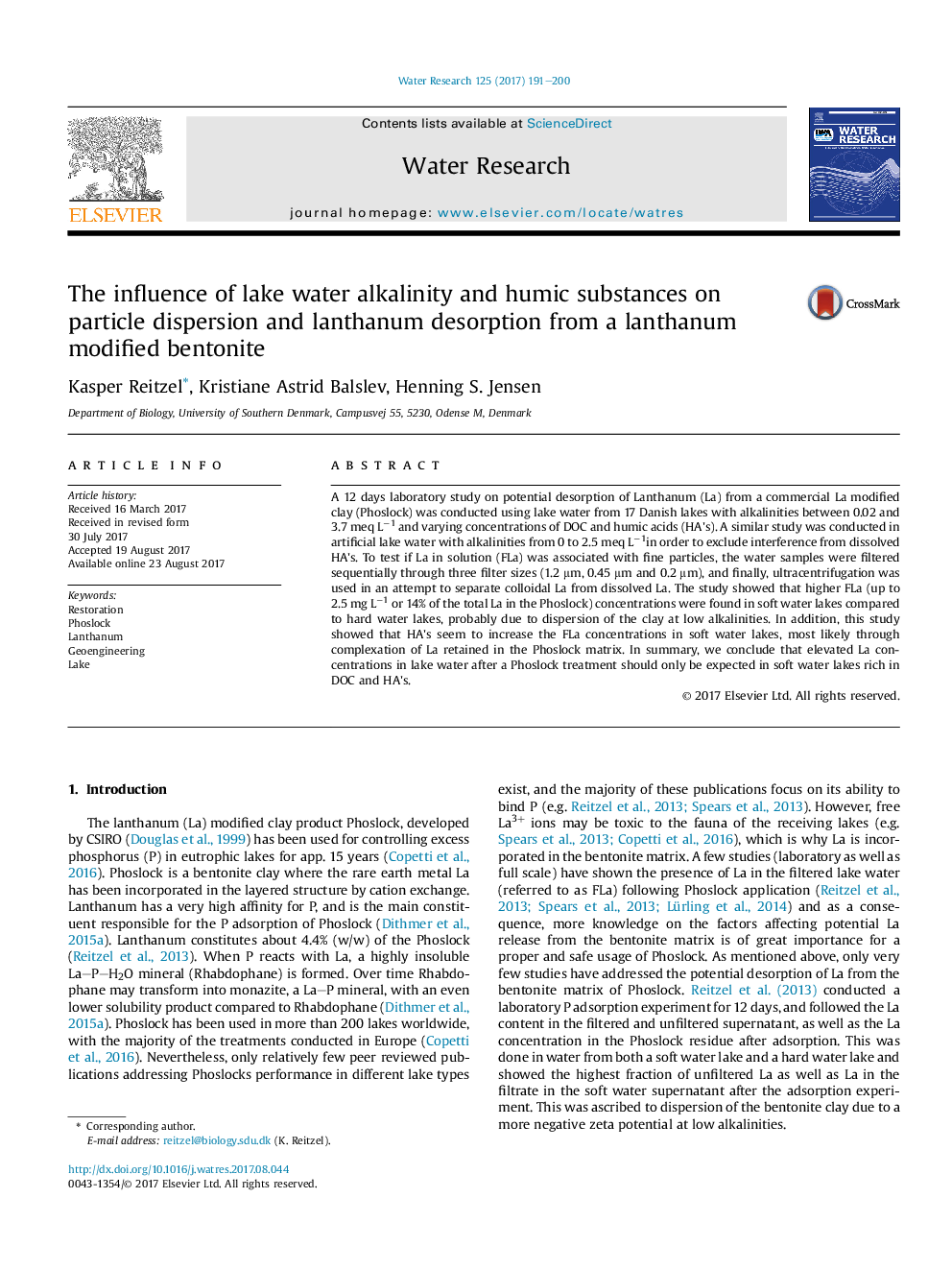| Article ID | Journal | Published Year | Pages | File Type |
|---|---|---|---|---|
| 5758790 | Water Research | 2017 | 10 Pages |
Abstract
A 12 days laboratory study on potential desorption of Lanthanum (La) from a commercial La modified clay (Phoslock) was conducted using lake water from 17 Danish lakes with alkalinities between 0.02 and 3.7 meq Lâ1 and varying concentrations of DOC and humic acids (HA's). A similar study was conducted in artificial lake water with alkalinities from 0 to 2.5 meq Lâ1in order to exclude interference from dissolved HA's. To test if La in solution (FLa) was associated with fine particles, the water samples were filtered sequentially through three filter sizes (1.2 μm, 0.45 μm and 0.2 μm), and finally, ultracentrifugation was used in an attempt to separate colloidal La from dissolved La. The study showed that higher FLa (up to 2.5 mg Lâ1 or 14% of the total La in the Phoslock) concentrations were found in soft water lakes compared to hard water lakes, probably due to dispersion of the clay at low alkalinities. In addition, this study showed that HA's seem to increase the FLa concentrations in soft water lakes, most likely through complexation of La retained in the Phoslock matrix. In summary, we conclude that elevated La concentrations in lake water after a Phoslock treatment should only be expected in soft water lakes rich in DOC and HA's.
Related Topics
Physical Sciences and Engineering
Earth and Planetary Sciences
Earth-Surface Processes
Authors
Kasper Reitzel, Kristiane Astrid Balslev, Henning S. Jensen,
